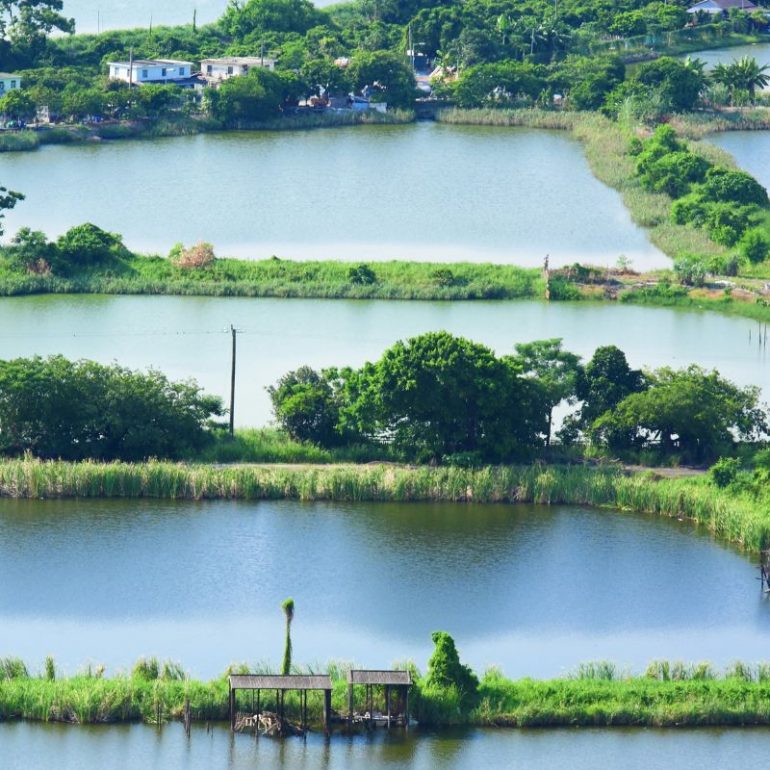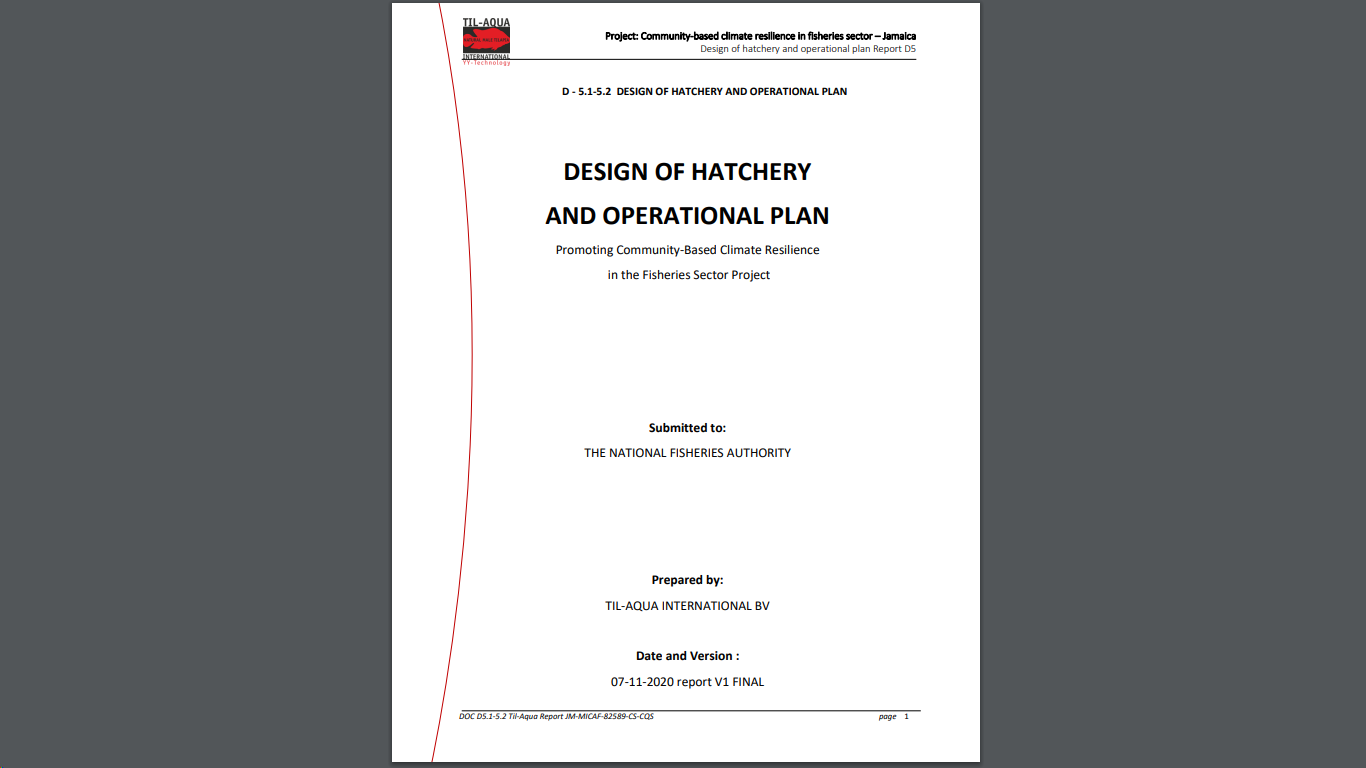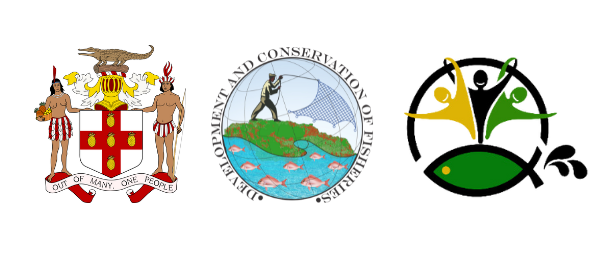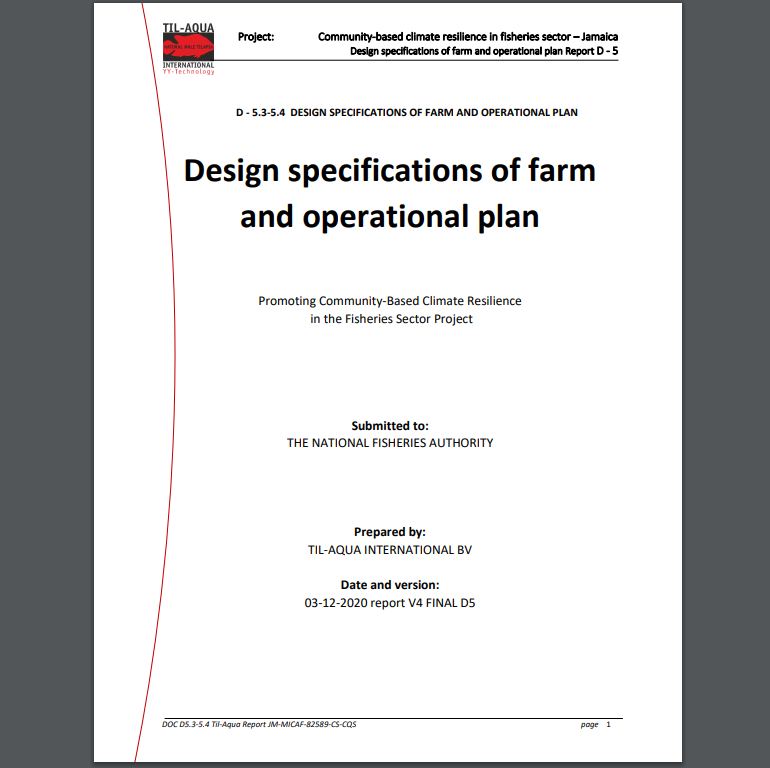

- Date: 7 November 2020
- Client: Ministry of Industry, Commerce, Agriculture and Fisheries
- Category: Aquaculture, Climate Resilience, Report
- Address: 6 Hope Gardens, Kingston
Design of Hatchery and Operational Plan
In this report Twickenham Park 2 is completely destined as tilapia hatchery; the spawning, incubation, swim-up and quarantine are considered as the indoor part of the hatchery. Twickenham Park 2 is set up as a tilapia advanced fry production unit. Since the introduction of the reproduction method, based upon classic spawning ponds, in the fifties of last century this method hasn’t changed. The biological and technical assessment of the hatchery site has revealed several shortcomings resulting in the strong decline in fry production. Leaking ponds, silt, water quality, bio-security and environmental issues are some of these shortcomings.
The way of collecting only free swimming larvae from a spawning pond is a method that is used in the past in most tilapia-hatcheries, but is no longer the best and most efficient way of production. This method has been improved in the last decades, and a more modern way of working is actively collecting eggs and larvae from the mouth of a female by flushing them out of the mouth of the breeding females. Survival from harvested swim-up fry to advanced fry for sales is quite poor. This mortality is caused by many different factors such as the condition of the ponds (leaking, siltation, growth of filamentous algae), but also management and water quality are important factors contributing to the low survival rate. A more controlled environment is developed nowadays by artificial incubation and the deployment of small so-called swim-up systems based on recirculation technology.
This modern way of producing 5 million advanced fry is laid down in a design with an extensive operational management description and a business plan with full attention to bio-security and environmental aspects. The fenced hatchery is modular in design and comprises:
- 2 lined ponds for growing new parent stock; outdoors
- 2 quarantine units
- 20 spawning units (RAS) with small bio-towers covered by shade nets
- 4 incubation units (RAS) with sedimentation tank; indoors
- 20 swim-up units (RAS) with sedimentation tank and bio-towers; indoors
- 2 lined ponds for fingerling and juvenile production; outdoors




